Nội dung bài viết
In order to reduce electricity bills, many families or factories often use 2-3 alternating power sources or equip additional backup power sources. In order for the process of using these power sources to be safe and uninterrupted, you need to understand the technique of installing reversing circuit breakers. Detailed instructions for installing a reversing circuit breaker will be in KTH Electric’s next article.
Prepare before connecting the reversing circuit breaker
If you have knowledge about the working principles and techniques for connecting reversing circuit breakers, you need to prepare the following tools in advance:
- Pliers set: pointed pliers, electric pliers, cutting pliers, opening brake pliers, opening brake pliers.
- Multi-function screwdriver set for disassembling and assembling electrical equipment
- Candle glue gun
- Paper knife, iron cutting scissors
- Electrical tape, plastic straps
- Multi-function electric meter
- 220V electric tester
In case of live electrical connection, you should wear long sleeves and insulating gloves to ensure safety.
Pay attention while connecting the reverse circuit breaker
First of all, if you are not confident to repair electricity yourself at home, or do not fully understand the electrical system, contact a professional electrician or electrical engineer.
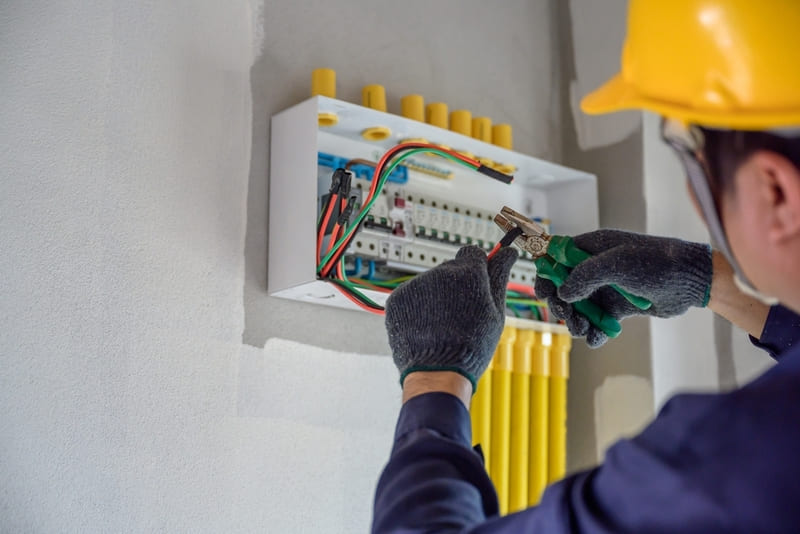
If you are confident in your ability to install a reversing circuit breaker, you should still pay attention to the following safety principles:
- Understand the structure and working principle of a reversing circuit breaker.
- Disconnect the main circuit breaker before performing any connection steps. In this case, priority should be given to disconnecting the circuit breaker outside the power pole. For added safety, you should install an anti-closing latch on the aptomat.
- Notify people around you that you need to turn off the power for repairs. If possible, post a notice on the circuit breaker outside the electric pole.
- Fully equipped with electrical testing kits, protective equipment and guaranteed to work in a dry environment.
- After repair, make sure the connections are tightened and insulated and that there is no electricity leakage to the wall or other objects.
In this case, you need to learn in advance about the structure and working principle of the reversing circuit breaker. This device has a fairly simple structure, all parts can be easily assembled and disassembled.
- Insulated ceramic base, under the base there are 2 fi 6 holes for screwing to the wall or wood.
- Copper poles: 1-phase reversing circuit breaker has 6 copper poles, 3-phase reversing circuit breaker has 9 copper poles. Screws are installed on all poles to connect to the electric wire.
- Insulated ceramic levers are used to open and close electrical circuits.
- Insulating plastic shell.
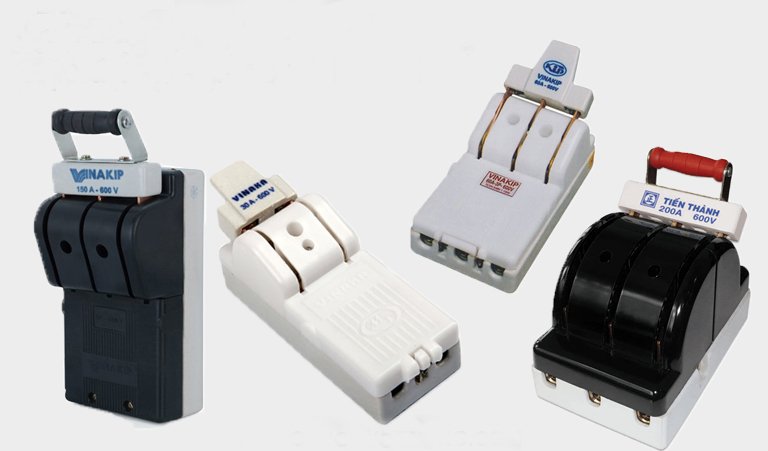
Regarding the operating principle, the reversing circuit breaker operates in 3 different modes corresponding to 3 positions of the lever.
- When the lever is in the vertical position, the terminals will not contact each other, meaning all input power is cut off
- When the lever is down, the middle terminal connects to the lower terminal. At this time, the power is turned off and electricity will be supplied from the generator.
- When the lever is up, the middle pole connects to the upper pole, respectively supplying power from the mains and disconnecting the generator, this is the default mode.
How to connect a 3-phase reversing circuit breaker with 3 power sources
3-phase reversing circuit breaker with 3 power sources for 380V industrial power systems, including 3 hot phases and 1 neutral phase. This system has 3 power supply sources including 1 3-phase power source for production and daily life for factories and families, 1 1-phase 220V power source and 1 backup power source which is a generator.
Installation diagram
In the 3-phase reversing circuit breaker connection diagram, there are devices:
- 1 electrical cabinet
- 1 3-phase 4-pole reversing circuit breaker
- 1 1-phase 2-pole reversing circuit breaker
- 2 total 3-phase circuit breaker
- 1-phase branch circuit breaker
- 1 cool bridge
- 1 generator
Photo: BTB Electric
Installation instructions
- The 4 pins A1, A2, A3, A4 of the 3-phase reversing circuit breaker are connected to the 3-phase power source from the meter. The 2 poles position A of the 1-phase reversing circuit breaker are connected to the 1-phase power source from the meter. The 2 poles at position C of the reversing breaker are connected to the power source from the backup generator.
- 1-phase power source from 2 poles at position B of the 1-phase breaker connected to 3 phase pins and 1 ground pin at position C of the 3-phase breaker. The hot phase is connected to pin C3 and then connected to C2 and C1, the neutral phase is connected to pin C4.
- The power source for single-phase devices is connected from pins B1, B2, B3 of the 3-phase reversing circuit breaker to the 3-phase total circuit breaker No. 2.
- The power source for 3-phase devices is connected from pins A1, A2, A3 of the 3-phase reversing circuit breaker to the 3-phase total circuit breaker number 1.
- The branch power source for single-phase electrical equipment is connected from behind the 3-phase circuit 2 to the branch circuits. Do not connect 1-phase and 3-phase electrical equipment together.
Principle of operation after fighting
After completing the connection, just turn the 3-phase reversing circuit breaker to position A, the system will use 3-phase power. This power source is divided into 2 branches: 1 branch to total circuit 1 circuit breaker (for 3-phase electrical equipment), the other branch connects to pins B1, B2, B3 to total circuit 2 circuit board (for 1-phase electrical equipment) and to the branch circuit circuits.
If you want to use a single-phase power source, you turn the reversing breaker to position C. Then, the 3-phase power source is disconnected from the total circuit breaker 2. Next, flip the 1-phase reversing breaker to position A. The 1-phase power source will run from the meter to the 2 poles of position A of the 1-phase reversing breaker. At this time, the power source flows from the 2 poles A of the 1-phase reversing circuit breaker to pins C1, C2, C3, C4 of the 3-phase reversing circuit breaker to the head of the 1-phase total circuit breaker number 2. Then the electricity is divided to the 1-phase branch circuit breaker.
To use the power source from the backup generator, the 1-phase reversing circuit breaker needs to be moved to position C. The power source will flow from the generator to the 2 poles of position C, then to pins B1, B2, B3, B4 of the 3-phase reversing circuit breaker, continuing from these pins to the total circuit breaker 2 and then to the branch circuit breakers.
See more: Instructions for playing 3-phase CB according to technical standards
How to connect a 1 phase 3 power source reversing circuit breaker
This method applies to families that alternately use 2 1-phase 220V power sources and 1 backup power source from a generator.
Connection diagram
In the diagram of installing a 1-phase 3 power source reversing circuit breaker, there are the following devices:
- 1 Electrical cabinet
- 2 2-pole, 1-phase reversing circuit breakers
- 1 Voltage stabilizer
- 1 total circuit breaker
- 2 Branched aptomat
- 1 Generator
Photo: BTB Electric
Installation instructions
- The first 1-phase power source from the meter outside the electric pole is connected to the 2 poles at position A of reversing breaker number 1.
- The second 1-phase power source from the meter is connected to the 2 poles at position A of reversing breaker No. 2.
- At the remaining 2 poles of the first reversing breaker, the power source is connected to the input of the voltage stabilizer. From the output of the voltage stabilizer, the power source is connected to the two poles at position A of reversing breaker No. 2.
- The generator’s backup power source is connected to 2 poles at position C of reversing breaker No. 2.
- 2 poles position B of reversing circuit breaker No. 2, the power source is connected to the input of the main circuit breaker and then divided into branch circuit breaker.
Principle of operation after fighting
- To use the mains power source, reversing breaker No. 2 moves to position C. At this time, the power source will flow from the output of the voltage stabilizer to the two poles of position C of breaker No. 2 and to the master circuit breaker.
- To use one of the two mains power sources, simply slide the reversing breaker lever number 1 to position A or C.
See more: Instructions for installing single-phase aptomat
How to connect a 1 phase 2 power source reversing circuit breaker
The 2 power sources in this case usually include the 1-phase 220V main power source and the auxiliary power source is a generator, which is replaced when the main power source is unstable, mostly in families at the end of the low voltage power source.
Connection diagram
In the installation diagram of a 1-phase 2 power source reversing circuit breaker, there are the following devices:
- 1 electrical cabinet
- 1 reversing circuit breaker
- 1 total circuit breaker
- Branch aptomats
- 1 generator
- 1 cool bridge
- 1 voltage stabilizer
Photo: BTB Electric
Instructions on how to install a 1-phase 2-power reversing circuit breaker
- The single-phase main power source is fed into the voltage stabilizer. From the output of the 1-phase voltage stabilizer, connect to the 2-pole reversing circuit breaker at position A.
- The 2 poles at position B of the breaker are connected to the generator output. The circuit breaker power source is connected to the two poles at position C of the reversing circuit breaker. From the output of the circuit breaker, the hot wire is divided into branch wires to branch circuits.
Principle of operation after fighting
When the reversing breaker closes to position A, the power source from the meter passes through the voltage stabilizer, to the two poles of the reversing breaker at position A and then to position B, to the master circuit breaker.
How to connect a reversing circuit breaker for a pump
A reversing circuit breaker is installed for the pump in case the electric float is broken and does not automatically start the water pump. At this time, the pump needs direct power without going through the float.
Connection diagram
The circuit breaker installation diagram for the water pump includes the following devices:
- 1 electrical cabinet
- 1 1-phase power reversing circuit breaker
- 1 MCB circuit board
- 1 electric float valve
Photo: BTB Electric
Instructions for installing a reversing circuit breaker for the pump
The power source from the phase wire and ground wire are connected to the L and N poles of the total circuit breaker, respectively. If it is necessary to use manual pumping mode, the ground wire and phase wire are connected to the 2 poles B of the reversing breaker.
In case of using automatic pump mode, the power phase wire is connected to 1 pole of the reversing breaker and the ground wire is connected to the MCB. The phase wire from the main MCB is connected to 1 pole of the float valve and the ground wire from the other leg of the valve is connected to the remaining B pole on the reversing breaker.
Question when installing reversing circuit breaker
Question 1: How to increase the durability of a reversing circuit breaker?
Reply: You just need to ensure correct connection techniques and use high quality components, the reversing circuit breaker will limit damage.
Question 2: Can reversing circuit breakers be used for large capacity equipment?
Reply: Have. However, to prevent overload, the reversing circuit breaker needs to be compatible with the device’s capacity. You should choose circuit breakers from reputable brands to ensure the technical specifications are accurate to the manufacturer’s design.
Question 3: Quickly distinguish between 3-phase and 1-phase reversing circuit breakers?
Reply: 3-phase reversing circuit breakers are often used to convert 3-phase alternating current to direct current. A single-phase reversing circuit breaker has the effect of changing the direction of alternating current.
KTH Electric has just shown you how to install 3-phase and 1-phase reversing circuit breakers. Hope the knowledge we provide is useful to you. If you want to learn other circuit breaker and circuit breaker connection techniques, please visit: https://etinco.vn/tin-tuc/kien-thuc/kien-thuc-cb/


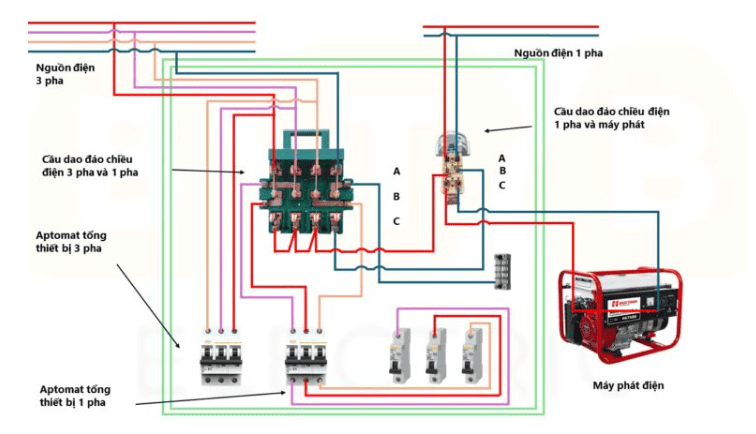

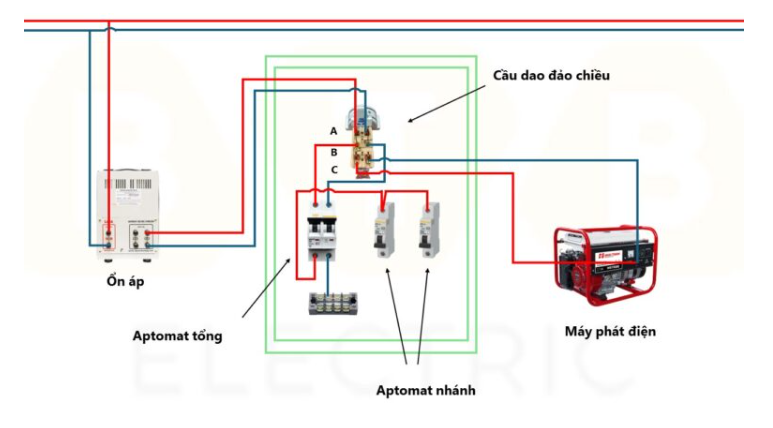
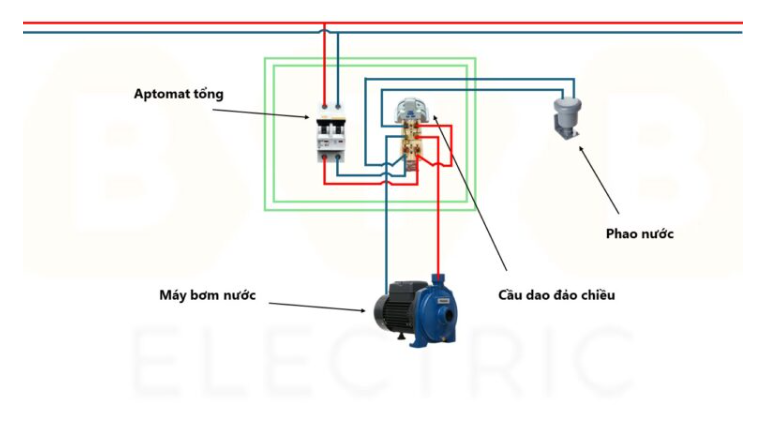
Nội dung được phát triển bởi đội ngũ truonglehongphong.edu.vn với mục đích chia sẻ và tăng trải nghiệm khách hàng. Mọi ý kiến đóng góp xin vui lòng liên hệ tổng đài chăm sóc: 1900 0000 hoặc email: hotro@truonglehongphong.edu.vn